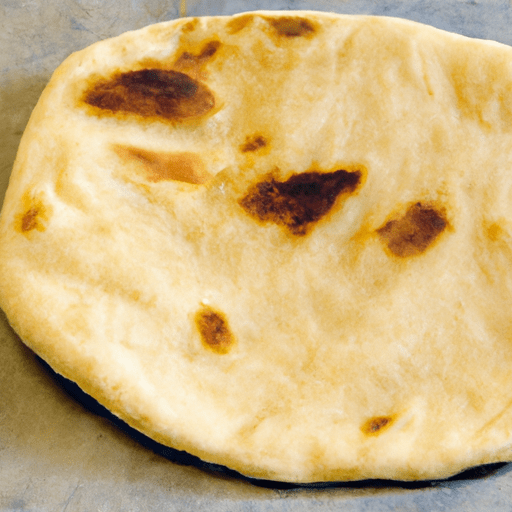The Wholesome Delight: Whole Wheat Pitas
If you’re in search of a versatile and healthy bread option, look no further than whole wheat pitas. These round, pocket-like breads have been enjoyed for centuries and are a staple in many Mediterranean and Middle Eastern cuisines. In this blog post, we’ll dive into the wonderful world of whole wheat pitas, exploring their taste, common uses in cooking, nutritional value, and some interesting historical facts.
A Taste of Wholesomeness
Whole wheat pitas offer a unique and hearty flavor that sets them apart from their white flour counterparts. They boast a slightly nutty taste with a hint of sweetness, making them a favorite choice for those who crave a satisfying bread experience. The soft and chewy texture with a slight crispness around the edges only adds to their delightful appeal.
Versatility at its Best
One of the greatest assets of whole wheat pitas is their versatility in the kitchen. These pocketed wonders can be used in various ways, making them a go-to choice for creative cooks. Some popular uses include:
Sandwich Wraps: Stuff your pita pockets with fresh vegetables, hummus, falafel, grilled chicken, or any other delicious fillings you desire. The pocket creates a convenient vessel to hold your ingredients and adds an extra layer of texture to your sandwich.
Pita Chips: Slice whole wheat pitas into wedges, drizzle them with olive oil, sprinkle with your favorite seasonings, and bake them until crispy. These homemade pita chips make a perfect accompaniment to dips like tzatziki, baba ganoush, or salsa.
Pita Pizzas: Utilize whole wheat pitas as a base for individual-sized pizzas. Simply top them with your favorite sauce, cheese, and toppings, and bake until the cheese is bubbly and golden. It’s a quick and healthy alternative to traditional pizza crust.
Pita Tacos: Fill whole wheat pitas with tasty taco fillings such as seasoned ground beef, shredded lettuce, diced tomatoes, and sour cream. The pocket shape ensures that every bite is packed with flavor and ingredients.
Nutritional Powerhouses
Whole wheat pitas offer more than just a delightful eating experience; they are also packed with essential nutrients. Compared to their refined flour counterparts, whole wheat pitas are higher in fiber, vitamins, and minerals. Here are some nutritional highlights of whole wheat pitas:
- Fiber: Whole wheat pitas are an excellent source of dietary fiber, which aids in digestion, promotes feeling full, and can help regulate blood sugar levels.
- Protein: These pitas contain a decent amount of protein, making them a great addition to a well-rounded meal.
- B Vitamins: Whole wheat pitas are rich in B vitamins such as niacin, thiamin, and folate, which support energy production and a healthy nervous system.
- Minerals: Whole wheat pitas provide essential minerals like iron, magnesium, and selenium, which play vital roles in various bodily functions.
A Brief Slice of History
Pitas have a long and fascinating history, dating back thousands of years. They are believed to have originated in the Middle East, where they were initially baked on hot stones or in simple, open-air ovens. Pita bread’s unique pocketed structure was likely a result of steam created during the baking process, causing the dough to puff up and create a hollow center.
Today, whole wheat pitas are enjoyed worldwide, and their popularity has grown exponentially due to their health benefits and versatility in modern cuisine.
Whether you’re a sandwich enthusiast, a snacker, or someone who appreciates the wholesome taste of whole wheat, pita bread is a must-try addition to your culinary adventures. Give it a go in your next meal, and let these wholesome delights bring a new level of deliciousness to your table.
Origin: Whole wheat pitas, also known as wholemeal pitas, have their origins in the Middle East, specifically in countries like Lebanon, Syria, and Greece. Pita bread, of which whole wheat pita is a variation, has been a staple in these regions for centuries.
Common Uses: Whole wheat pitas are versatile and can be used in various ways. They are often used as a bread alternative for sandwiches and wraps, serving as a pocket to hold fillings such as falafel, veggies, or meat. They can also be split in half and toasted to make pita chips, perfect for scooping up dips like hummus or baba ganoush.
Nutritional Benefits: Whole wheat pitas offer several nutritional benefits. They are a good source of dietary fiber, which can help promote digestive health and keep you feeling full. Additionally, they contain complex carbohydrates, providing longer-lasting energy compared to refined grains. Whole wheat pitas also offer essential vitamins and minerals, including B vitamins, iron, and magnesium.
Unique Properties or Historical Significance: Pitas have a distinctive feature - when baked, they form an air pocket inside, making them naturally poufy and perfect for filling. In terms of historical significance, pita bread has been a traditional food in the Mediterranean and Middle Eastern regions for hundreds of years. It has provided sustenance to people across various cultures for generations.




Use the share button below if you liked it.
It makes me smile, when I see it.